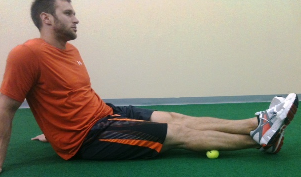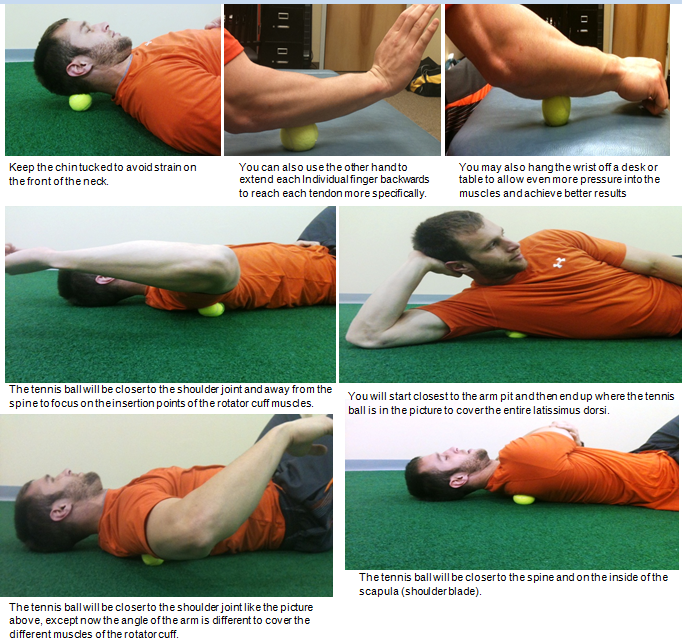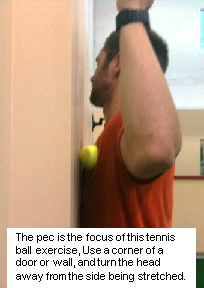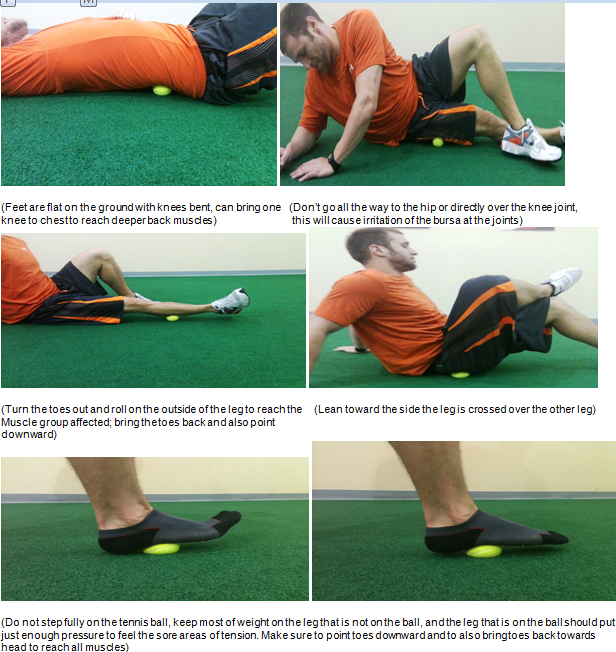Dr. Heather Morales, DC, MS, CKTP
May 29, 2011
In a previous article about myofascial release exercise, I had discussed the benefits of using a foam roller: muscle flexibility, increased joint range of motion, detoxification, and even injury prevention. Foam rollers are a little big to travel with and take to places other than the gym or home. The same type of myofascial exercise can be conveniently done with tennis balls, lacrosse balls, golf balls, and even roller hockey balls (the harder the ball the better the result, but more sensitive to pain). I will go over the areas that you can use the tennis ball (or whichever ball you choose), and discuss some injuries you can prevent from occurring. For each area, you will lie on the spot for 10-15 seconds at the “sore areas” of the muscle group. I like to do this two to three times to get the full benefit before and after my workday or workouts.
UPPER BODY
Myofascial release of the upper body (from the wrists to the back of the head) will result in pain relief for conditions such as: carpal tunnel syndrome, outside elbow pain, inside elbow pain, headaches, TMJ dysfunction, neck pain, shoulder tension, shoulder impingement syndrome, posture correction, and thoracic outlet syndrome. The following images will show you the exact position. (Note: In some browsers and screen resolutions, the text in the image may be too small to read. If so, then click on the image and it will show a bigger version of the image with legible text.)
LOWER BODY
Myofascial release of the lower body (lower back down to the feet) will help relieve and prevent conditions such as: IT Band syndrome, lateral knee pain, patella-femoral syndrome, plantar fasciitis, sciatica, low back pain, hip pain, piriformis syndrome, shin splints, and achilles tendonitis to name a few.

Remember a few things with these exercises:
- You may feel slight discomfort where the tennis ball is hitting the trigger points.
- You should take deep breaths in and out to allow relaxation and better results.
- If the pain is too unbearable, you should put a hand towel over the ball or switch back to a foam roller.
- You shouldn’t have any significant bruising. This is a sign you are pressing TOO hard over the area and may cause tissue damage.
- Consult your physician if you have any other questions before beginning these exercises.
(Dr. Heather Morales, DC, MS, CKTP is a Chiropractic Physician and Certified Kinesiotaping Provider from St. Louis. Her hobbies include boxing, jiu jitsu, hockey, cooking, and the outdoors.)
(The information in this article reflects the opinion of the writer and not the opinion of healthonabudget.com. This article is for educational purposes only. It is not intended nor implied to be a substitute for professional medical or nutritional advice. The reader should always consult his or her healthcare provider or nutritionist to determine the appropriateness of the information for their own situation.)





Love this! Very helpful visuals for people unfamiliar with how to use a tennis ball for MFR. Thanks for sharing.
This has helped me a lot. But what am I doing or not doing that causes my muscles to contract so much that I need to do this regularly?